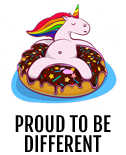dadevster":2pve2291 said:
I'm of the opinion that it's better to learn painting in real life first before attempting digital painting (but I'm sure many people disagree)
both are 100% entirely different areas of art and require almost entirely different skills & concepts
i've seen people belt out fantastic, amazing digital work, and then suck and die with traditional media. and vice versa.
with traditional media, you have to develop a tactile technique: literally FEELING the medium in your hands and gauging direction/weight/length of stroke by the tactile sensations being felt while drawing/painting/arting. composition & texture are extremely key elements. you can not see what is under or behind your pen/brush/etc., so you must develop a type of forethought and instant assumption as you guide your strokes.
with digital media (excluding those write-on monitors etc.), you can always see everything on your canvas at all times -- under the "brush", behind it, and 3 "feet" to the left of it. the problem is that you have to develop the ability to contextualize the size/span ratio between your digital canvas and the tablet you are not looking at. similar to guiding a marionette. instead of working in texture, you work in positive and negative light play, to "fake it". your brush is not tactile, so you must gauge your strokes via the sensation of strength/stability in your hand (to avoid shaking or jittering).
they both have TOTALLY different "tricks" and techniques and tools, as well.
2 totally 100% different things and it really doesn't matter what order you learn them in.
even if Van Gogh woke his happy ass up right now and picked up an Intuos4 to re-create Starry Night in Photoshop, he would be met with a horrific mess of dark blobs and uncontrolled jitters, and would have to teach himself art all over again.










